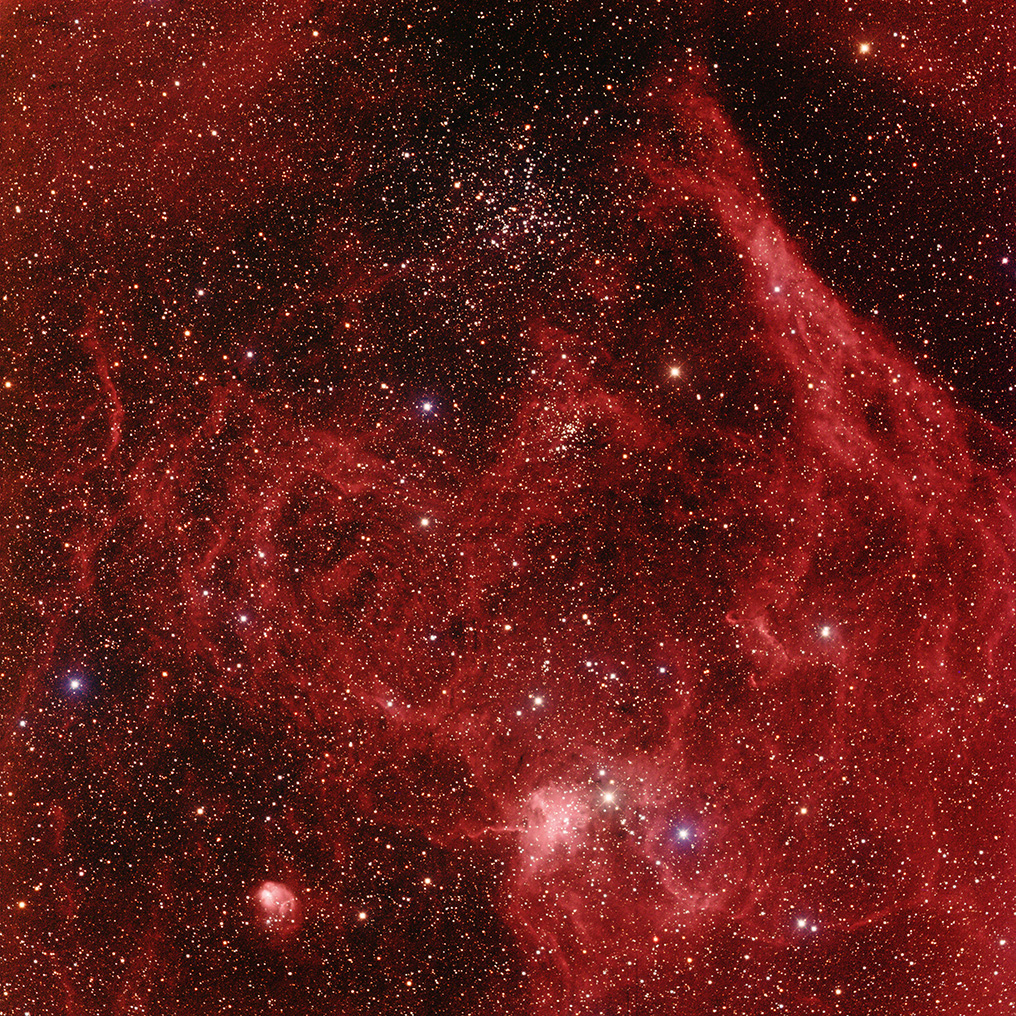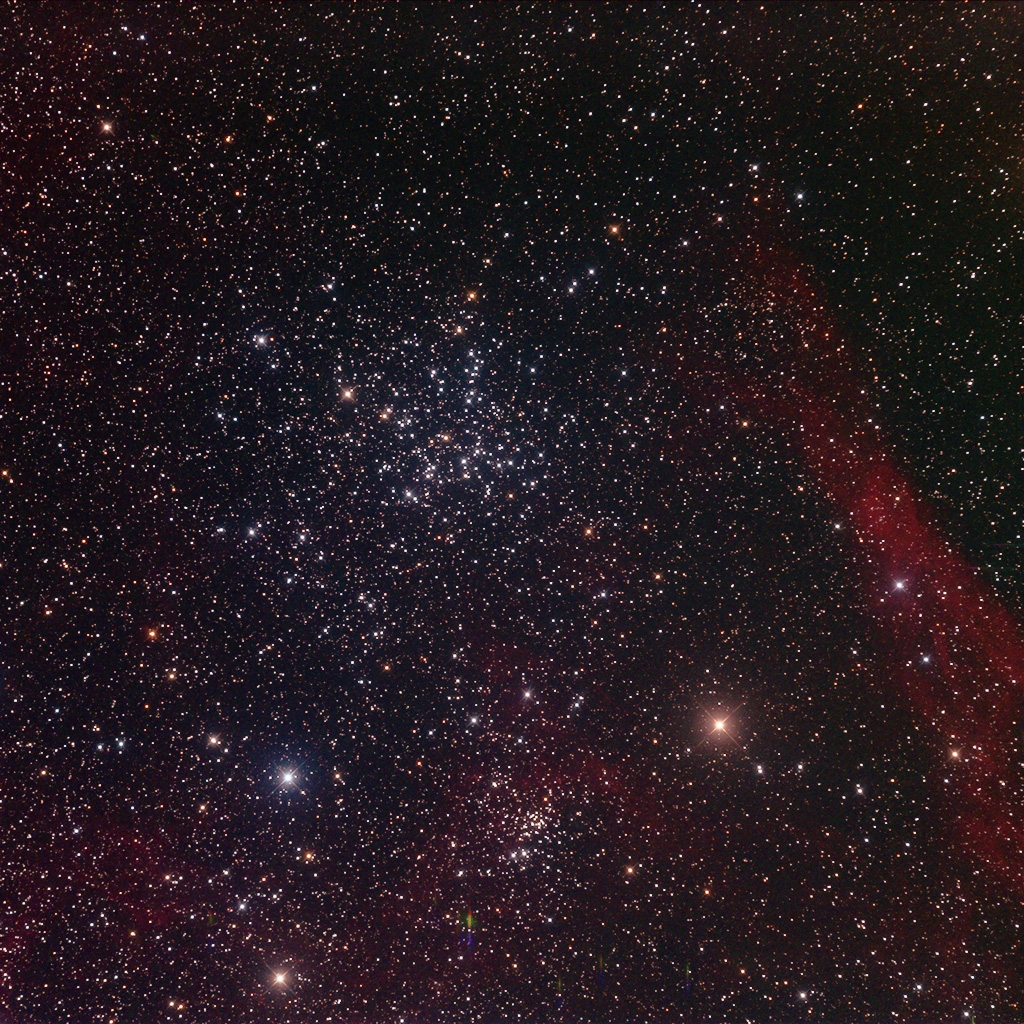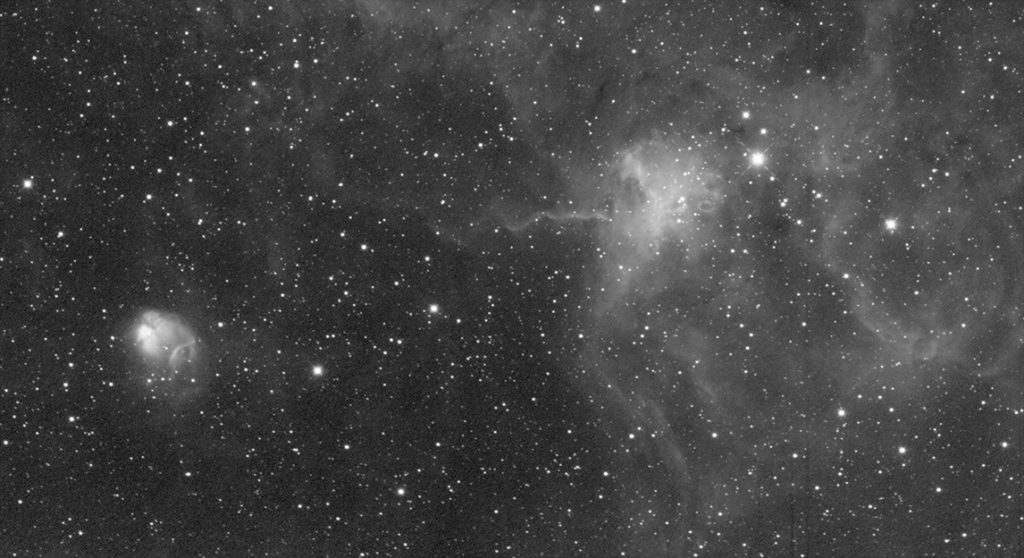Riding high in the late winter sky, in the constellation Auriga The Charioteer, a vast cloud of hydrogen glows as it produces copious numbers of stars. Among these clusters, M38 reigns supreme. There are few clusters in our sky to rival the sight this one presents to both the visual astronomer and the astrophotographer.

Surrounded by an extensive envelope of hydrogen, in which plenty of new stars are still forming, M38 is a cluster in the middle span between its fast and furious beginnings and sedentary old age. The hot blue stars are nowhere to be found, with their life ended as supernovae or having been gravitationally ejected. What’s left is stars that will live for billions of years.
These stars will eventually completely disperse and are doubtless in the process of doing so even now. This happens because of gravity. Stars exert a gravitational pull, and when one star ventures too close to another, the less massive star picks up speed as it moves by. This is the same effect we see with space probes as we use planets to give them a “gravity boost.” This isn’t the only condition for a star’s expulsion from the cluster. The cluster itself, as the sum of all its constituent stars, has a gravitational field. When stars are gravitationally accelerated to a speed greater than the cluster’s escape velocity, that star will exit, never to return. As more and more stars exit, the gravitational pull of the cluster diminishes, which makes expulsion even easier and more likely. Once the process starts, it’s irreversible, and it happens for almost all clusters.

Just below M38 is the less massive cluster NGC 1907. Though it appears to be smaller, we can’t say for certain that it is simply by looking at a visual light photograph of it. It may just be much farther away, and so appear to be smaller much like a distant building appears smaller than your outstretched hand. Without studying the cluster with specific photographic and spectrographic techniques designed to estimate the distances to star clusters, we can only say that it is probably less massive M38, owing to the smaller number of stars it contains. Interpreting scenes in this way gives us a sense of the three-dimensional nature of what we’re actually looking at.
In fact, those studies have been done for M38 and NGC 1907. M38 is about 3,500 light years distant, while NGC 1907 is about 4,500 light years away from us. This distance difference is not enough to account for the difference in apparent diameter, so with that information, we can conclude that NGC 1907 is indeed smaller than M38, and in fact may not have even been born of the same cloud of hydrogen. These clouds typically are not 1,000 light years across.

At the bottom of the image, cropped in the calendar version, we see two bright areas known as “The Spider” and “The Fly.” The Spider seems to have long legs, perfect for sneaking up on the smaller fly to devour it. I’ve always said astronomers have too much time… personally I don’t see a spider OR a fly!
Like most such clouds of hydrogen, there is considerable structure in this one. It is shaped by the forces of nature, gravity, stellar winds, radiation pressure, and shock waves from supernovae and new stars. Long festoons of glowing gasses drape the area, with dusty silhouettes creating large dark voids where, in fact, there is more matter than where the gasses are more clearly seen.
Other clouds of hydrogen are almost featureless, blank slates which have yet to collapse into stars which will create the chaos we see in scenes like these. This phase of a hydrogen cloud’s life is actually rather brief. It exists, dark and hidden, until something happens to trigger star birth. That event creates a chain reaction, which will ultimately disperse both the cloud and the stars it created into the vastness of the galaxy.